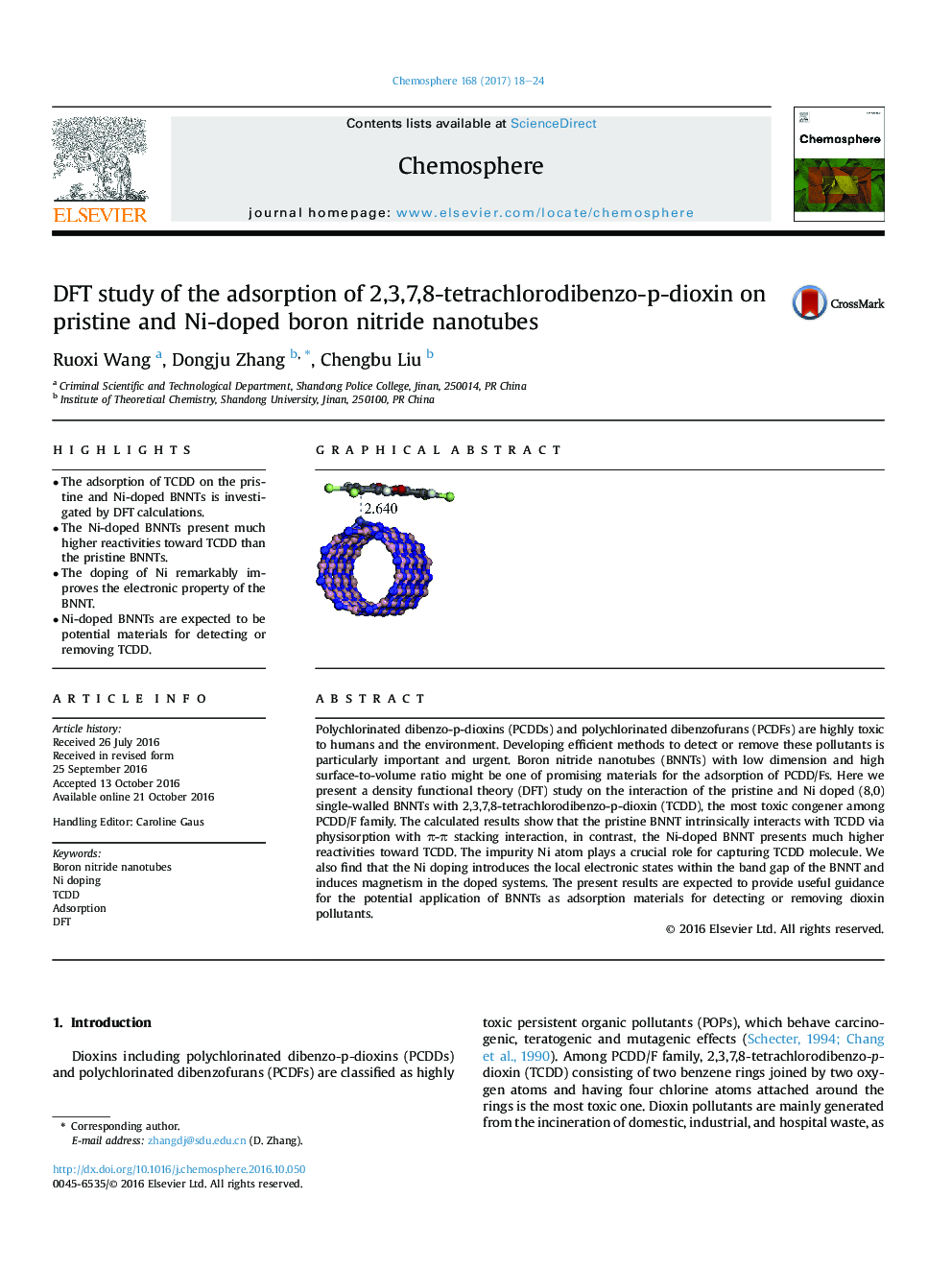| کد مقاله | کد نشریه | سال انتشار | مقاله انگلیسی | نسخه تمام متن |
|---|---|---|---|---|
| 5746581 | 1618803 | 2017 | 7 صفحه PDF | دانلود رایگان |

- The adsorption of TCDD on the pristine and Ni-doped BNNTs is investigated by DFT calculations.
- The Ni-doped BNNTs present much higher reactivities toward TCDD than the pristine BNNTs.
- The doping of Ni remarkably improves the electronic property of the BNNT.
- Ni-doped BNNTs are expected to be potential materials for detecting or removing TCDD.
Polychlorinated dibenzo-p-dioxins (PCDDs) and polychlorinated dibenzofurans (PCDFs) are highly toxic to humans and the environment. Developing efficient methods to detect or remove these pollutants is particularly important and urgent. Boron nitride nanotubes (BNNTs) with low dimension and high surface-to-volume ratio might be one of promising materials for the adsorption of PCDD/Fs. Here we present a density functional theory (DFT) study on the interaction of the pristine and Ni doped (8,0) single-walled BNNTs with 2,3,7,8-tetrachlorodibenzo-p-dioxin (TCDD), the most toxic congener among PCDD/F family. The calculated results show that the pristine BNNT intrinsically interacts with TCDD via physisorption with Ï-Ï stacking interaction, in contrast, the Ni-doped BNNT presents much higher reactivities toward TCDD. The impurity Ni atom plays a crucial role for capturing TCDD molecule. We also find that the Ni doping introduces the local electronic states within the band gap of the BNNT and induces magnetism in the doped systems. The present results are expected to provide useful guidance for the potential application of BNNTs as adsorption materials for detecting or removing dioxin pollutants.
The Ni-doped BNNT presents stronger interaction toward TCDD pollutant than the pristine BNNT and is expected to be a potential novel resource for detecting or removing dioxin.254
Journal: Chemosphere - Volume 168, February 2017, Pages 18-24